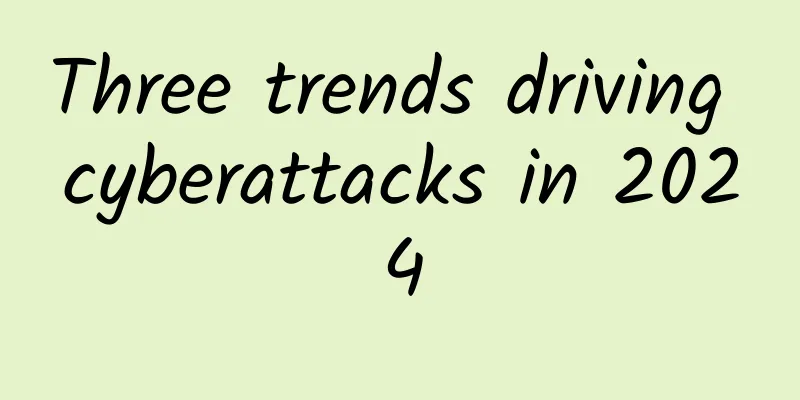Three trends driving cyberattacks in 2024

|
Ransomware claim activity is set to grow more than 50% year-over-year in 2023, while so-called ransomware-as-a-service (RaaS) kits, which start at just $40, have been a key driver of the overall increase in attack frequency. Gangs are also carrying out more attacks at a faster pace, with the average number of days to execute an attack falling to four days from around 60 in 2019. Most ransomware attacks now involve the theft of personal or sensitive business data, increasing the cost and complexity of incidents and bringing greater potential for reputational damage. Analysis of large cyber losses (€1 million and above) in recent years by Allianz Commercial, a global insurance company, shows that the number of cases where data has been compromised is increasing - doubling from 40% in 2019 to nearly 80% in 2022, with even higher activity in 2023. Protecting businesses from intrusions is therefore a cat-and-mouse game in which cybercriminals have the upper hand. Threat actors are now exploring ways to use AI to automate and accelerate attacks, creating more effective malware and phishing campaigns. Add to that the explosive growth of connected mobile devices and 5G-enabled IoT, and the avenues for cyberattacks look only likely to increase in the future. At Allianz, our global team of risk engineers regularly monitor the cyber environment to help companies mitigate emerging risks, threats currently on our radar include: The power of artificial intelligence (accelerating cyber attacks)Threat actors are already using AI-powered language models like ChatGPT to write code. GenAI can help less-skilled threat actors create new strains and variants of existing ransomware, potentially increasing the number of attacks they can perform. We expect to see an increase in the use of AI by malicious actors in the future, which will require stronger cybersecurity measures. Voice impersonation software has become a powerful addition to the cybercriminals’ arsenal, with one case involving the CEO of a UK energy supplier transferring around $250,000 to a scammer after receiving a call from what they believed to be the head of the division’s parent company, asking them to wire the money to a supplier. The voices were generated using artificial intelligence, and deepfake video technology designed and sold for phishing scams can now also be found online for as little as $20 per minute. It’s not all bad news though, we’re likely to see more incidents leveraging AI in the future, but investments in AI-powered detection should also help catch more incidents earlier. Mobile devices expose personal and corporate dataLax security and the mixing of personal and corporate data on mobile devices such as smartphones, tablets and laptops is an attractive combination for cybercriminals. Allianz Commercial reports that incidents caused by poor cybersecurity on mobile devices are increasing. During the pandemic, many businesses enabled new methods of accessing their corporate networks through dedicated devices without requiring multi-factor authentication (MFA), which also led to several successful cyberattacks and huge insurance claims. Criminals now target mobile devices with specific malware to gain remote access, steal login credentials, or deploy ransomware. Personal devices often have less stringent security measures, and using public Wi-Fi on such devices can increase their vulnerability, including to phishing attacks through social media. The rollout of 5G technology is also a potential area of concern if not managed properly, as it will power more connected devices, including complex applications - from driverless cars to smart cities. However, many IoT devices do not have a good track record in cybersecurity, are easily discovered, and will not have MFA mechanisms in place. This, together with the addition of AI, poses a serious cyber threat. Even today, we can still see devices on the internet with default passwords. Cybersecurity skills shortages impact cost and frequency of incidentsThe growing shortage of professionals will make cybersecurity efforts increasingly complex. Currently, the global cybersecurity workforce gap exceeds 4 million, and demand is growing at twice the rate of supply. Gartner predicts that by 2025, talent shortages or human errors will cause more than half of major cyber incidents. In short, because technology is evolving so quickly, there aren’t enough experienced people to keep up with the threats. It’s hard to find good cybersecurity engineers, which means companies are more vulnerable to cyber incidents. Without skilled personnel, it’s harder to predict and prevent incidents, which could mean more losses in the future. The shortage of cybersecurity experts will also affect the cost of incidents. According to IBM's "2023 Cost of Data Breach Report", the average data breach cost for companies with severe security skills shortages is $5.36 million, which is about 20% higher than the actual average cost. Early detection is key to combating emerging cyber threatsPreventing cyberattacks is becoming increasingly difficult, and the stakes are higher, so the ability and tools to detect and respond early are becoming more and more important. If you have an undetected vulnerability in your network, it is a potential Achilles' heel. If you don't have effective early detection tools, it can lead to extended unplanned downtime, increased costs, and greater impact on customers, revenue, profitability, and your reputation. Currently, the largest share of IT security budgets goes to prevention, with around 35% going to detection and response, however, if undetected, a breach can escalate quickly, and once data is encrypted and/or stolen, the costs can snowball – costing 1,000 times more than if the incident had not been detected and contained early, the difference between a $21,784 loss turning into a €20 million loss. Looking ahead, detection tools will be the next logical step for most companies to invest in. Ultimately, early detection and the ability to respond effectively will be key to mitigating the impact of cyberattacks and ensuring a sustainable cyber insurance market in the future. |
<<: How O-band technology can help overcome implementation barriers from 5G to 6G
>>: "Vanity" is updated: Huawei's distribution market is booming
Recommend
HostYun Los Angeles CN2 GIA line AMD series VPS simple test
We have shared information about VPS hosts in var...
Mobile layout: Do you enter from a single point or start with the platform?
Mobility has become a standard feature of enterpr...
With unlimited data and 5G coming, how far are we from eliminating Wi-Fi?
According to media reports, Wi-Fi may be phased o...
Operators remove many 4G packages to make way for 5G, user experience may be affected
Recently, China Mobile's online business hall...
JuHost: $2.99/month-1GB/20G SSD/1TB@100Mbps/Kowloon, Hong Kong
JuHost has released a regular November promotion,...
F5: Building an architecture with full data path protection to protect enterprise applications
As global digital transformation continues to acc...
The 18th China Enterprise Annual Selection List in 2023 was announced: Haowang AI Ultra-Low Light 3.0 Series won the 2023 China IT Industry Digital Infrastructure Excellent Product Award
In November 2023, the "China Enterprise &quo...
Visit the exhibition area without leaving home and experience Huawei's 5G technology beyond your imagination
[51CTO.com original article] Not long ago, Huawei...
The principle of Ethernet data transmission is like this, it is worth collecting
First, let's review the basic concept of rout...
WebSocket in real-time chat room
To learn more about open source, please visit: ...
If one person has internet access, the whole village will be at ease! Two ways to break through LAN blockade
Hey! Dear friends, long time no see. Today I brin...
LiCloud: $29.99/month Hong Kong dedicated server - E3-1230v2, 8G memory, 240G SSD or 1TB HDD hard disk, 15M bandwidth
LiCloud.io is a hosting company (LiCloud Limited)...
The Ministry of Industry and Information Technology released the "14th Five-Year Plan", and the information and communication industry's revenue will grow by 10% annually by 2025
On November 16, the Ministry of Industry and Info...
In 2018, Huawei invites ecosystem partners to jointly stimulate the unlimited potential of the ecosystem
[51CTO.com original article] At 9:30 am on March ...
TCP/IP based application programming interface
In "TCP/IP Basics: Data Encapsulation",...









